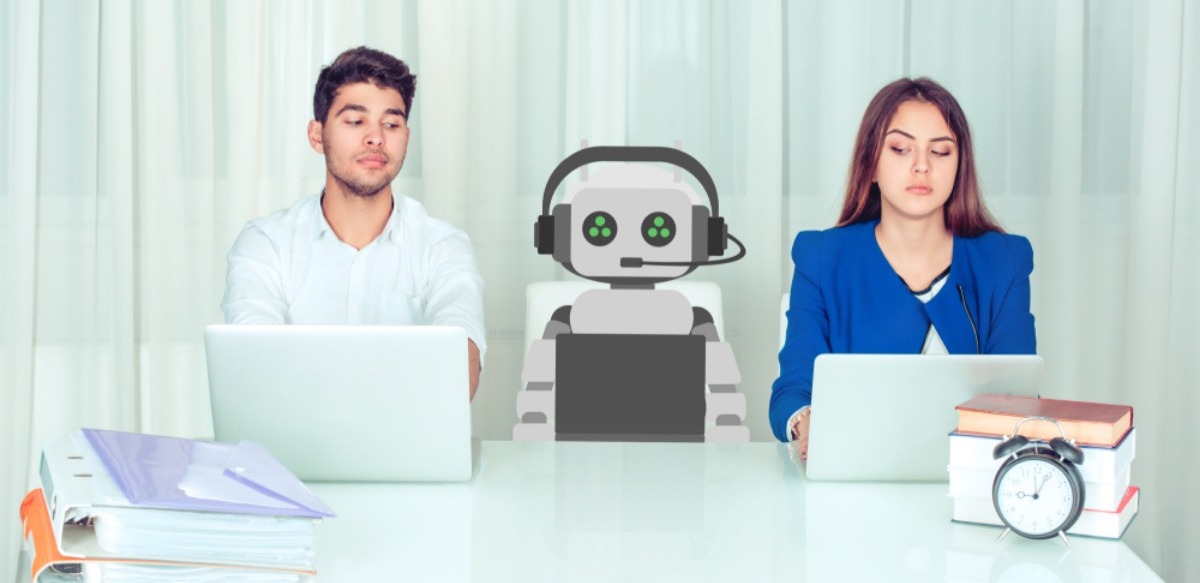Robots are tipped to replace 40% of jobs by 2030.
That’s a pretty extraordinary prediction. In more or less a decade, two out of five jobs will be performed by artificial intelligence (AI).
We discuss AI a lot here among the team, because it’s transforming the way enterprises do business.
Look at the Digital Adoption Platform & AI, for example. The Digital Adoption Platform (DAP) is disrupting the way change managers, CIOs, and HR teams achieve their goals.
It’s a hugely positive thing for enterprise professionals — and it’s largely thanks to AI.
What is AI?
According to Minsky, AI (or machine intelligence) is any task performed by a program whereby, if a human carried out that same task, (s)he would have to “apply intelligence” to accomplish it.
Broadly speaking, AI can be split into two types: narrow AI and general AI.
ZDNet describes narrow AI as, “what we see all around us in computers today: intelligent systems that have been taught or learned how to carry out specific tasks”.
General AI is the type of adaptable intelligence found in humans. It’s capable of learning how to do anything and everything, or to reason about a wide variety of topics based on the experience it has accumulated.
Generally speaking, the hallmarks of AI are:
- Planning
- Learning
- Problem solving
- Reasoning
- Knowledge representation
- Motion
- Perception
- Manipulation
- Social intelligence
- Creativity
This is important context for understanding how the Digital Adoption Platform & AI relate to each other.
The evolution of AI
You might think that AI is a relatively new business innovation. But actually AI has a long history. Humans have been discussing the concept of AI more or less as long as they’ve been able to write.
But it wasn’t until 1950 that famous WW1 code-breaker, Alan Turing, came up with the idea that machines could “think”.
The Turing Test is still used today as a benchmark to determine a machine’s ability to process information like a human.
Then in 1959, American cognitive scientist Marvin Minsky co-founded the Massachusetts Institute of Technology’s AI laboratory. Minsky also advised Stanley Kubrick on 2001: A Space Odyssey, which introduced the world to HAL 9000, a fantastic early representation of general AI.
However, it’s in the corporate world where AI is achieving great things.
“Nowhere has AI had a greater impact in the early stages of the 21st century than in the office. Machine-learning technologies are driving increases in productivity never before seen.”
Wired
In fact, a Japanese firm recently made history by being the first company to nominate an AI board member because of its superhuman ability to predict market trends.
AI in a corporate context
From trend predictions to workflow management tools and even media buying, AI is changing the way we work.
What is feeding this AI adoption within enterprises? Big data. AI can process vast amounts of data in the blink of an eye, a skill that no human can match.
AI can detect issues and irregularities quickly. In a fast paced business world, accurate and speedy problem-detection is a serious competitive advantage.
Businesses can “train” AI to handle customer support, which reduces costs. AI can even optimize sales by scouring the internet for prospects with the same buying patterns as existing customers.
AI is also making waves in healthcare. Its ability to analyze massive amounts of data can lead to more accurate prevention and treatment of medical conditions.
Digital Adoption Platform & AI: the 411
So how does all this relate to the question of Digital Adoption Platform & AI? The answer is, on a few levels.
The DAP is AI, in the sense that it learns user behavior. It’s an invisible algorithmic layer that can be applied to any digital system, making it more easy to use.
This is invaluable in terms of employee onboarding, training, and improving user experience (UX).
But where it gets really interesting is the DAP’s predictive power.
Traditionally, analytics show how many users have recently churned from a platform, app, or system. The DAP, on the other hand, uses AI to predict user intentions and proactively keep them engaged.
The DAP segments users based on their likelihood to churn and identifies the optimal time to engage with them. It can automatically target users with the right message at the right time.
This reduces churn, as users are proactively engaged and encouraged to stay.
External usage:
The DAP can identify struggling customers and automatically provide contextual guidance or relevant offers. This improves product adoption and customer retention.
Internal usage:
The DAP’s AI can determine which employees are overwhelmed by a digital tool and automatically expose them to helpful content that accelerates their time to competency. This increases employee productivity, morale, and performance.
An exciting future
When it comes to the Digital Adoption Platform & AI, you can’t have one without the other.
As advancements in AI continue, the DAP will only get better and better. The more capable the DAP’s AI is at reasoning and problem-solving, the better your adoption rates are going to be.













